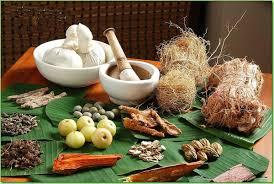In a world where the boundaries of traditional medicine are constantly being tested, alternative medicine emerges as both a beacon of hope and a subject of skepticism. As we navigate the crossroads between age-old remedies and cutting-edge science, the allure of alternative therapies beckons with promises of holistic healing and personalized care. Yet, these unconventional paths are not without their shadows. For every testimonial of miraculous recovery, there are whispers of unproven efficacy and potential risk. This article delves into the multifaceted world of alternative medicine, exploring its potential to complement conventional treatments while also examining the controversies that surround it. Join us as we weigh the benefits and drawbacks of venturing beyond the familiar realms of modern healthcare.
Exploring the Roots: Understanding the Origins of Alternative Medicine
The tapestry of alternative medicine is woven from ancient practices that have evolved across cultures and centuries. From the lush forests of the Amazon to the serene temples of China, diverse healing traditions emerged long before the advent of modern pharmaceuticals. These practices are deeply rooted in a holistic understanding of the human body and its connection to nature. Some of the earliest forms of alternative medicine include:
- Ayurveda – Originating in India over 3,000 years ago, it emphasizes balance in bodily systems using diet, herbal treatment, and yogic breathing.
- Traditional Chinese Medicine (TCM) – Developed in China over thousands of years, TCM includes acupuncture, herbal medicine, and Tai Chi, focusing on balancing the body’s energy.
- Indigenous Healing Practices – Diverse methods employed by native cultures worldwide, often involving spiritual rituals and the use of local plants and minerals.
These practices share a common belief in the body’s ability to heal itself and the importance of treating the whole person rather than just the symptoms. They offer a rich tapestry of knowledge that continues to influence modern alternative therapies. While modern medicine often prioritizes empirical evidence and clinical trials, the origins of alternative medicine remind us of the profound wisdom found in ancient traditions, encouraging a more integrative approach to health and wellness.

The Healing Spectrum: Evaluating the Benefits of Alternative Therapies
Alternative therapies, ranging from acupuncture to herbal medicine, have garnered a devoted following for their holistic approach to health. Proponents argue that these practices offer a personalized and natural way to achieve wellness, often focusing on the root cause of ailments rather than just symptoms. Some of the potential benefits include:
- Holistic Healing: Addresses physical, emotional, and spiritual health.
- Reduced Side Effects: Many treatments use natural ingredients, minimizing adverse reactions.
- Empowerment: Encourages active participation in one’s own health journey.
However, critics point out several drawbacks that cannot be overlooked. Concerns include:
- Lack of Regulation: Many alternative therapies are not strictly regulated, leading to potential safety issues.
- Limited Scientific Evidence: Some practices lack robust clinical trials to back their efficacy.
- Potential Interactions: Herbal remedies can interact with prescription medications, sometimes adversely.

Navigating the Risks: Identifying Potential Drawbacks of Non-Conventional Treatments
While alternative medicine offers an appealing array of options for those seeking holistic health solutions, it’s crucial to approach these treatments with a discerning eye. Potential drawbacks exist, and understanding them can help in making informed decisions. One primary concern is the lack of rigorous scientific validation for many alternative therapies. Without comprehensive studies, it’s challenging to confirm their efficacy or identify possible side effects.
Additionally, the absence of standardization can lead to variability in treatment quality. For instance, herbal supplements may differ in potency and purity depending on their source, potentially resulting in unexpected reactions. Other considerations include:
- Interactions with conventional medications – Some alternative treatments can interfere with prescribed drugs, reducing their effectiveness or causing adverse effects.
- Financial implications – Non-conventional therapies are often not covered by insurance, leading to out-of-pocket expenses.
- Delayed conventional treatment – Relying solely on alternative medicine might postpone critical conventional treatments, potentially worsening medical conditions.
By being aware of these risks, individuals can better navigate the world of alternative medicine, balancing its potential benefits with cautionary wisdom.

Making Informed Choices: Integrating Alternative Medicine with Traditional Care
When considering the integration of alternative medicine with traditional care, it’s essential to weigh both the advantages and potential drawbacks. Alternative medicine offers a holistic approach, often emphasizing preventive care and the connection between mind, body, and spirit. Many patients appreciate the personalized attention and natural remedies that alternative therapies provide, which can sometimes lead to fewer side effects compared to conventional pharmaceuticals.
- Pros: Emphasis on prevention, personalized care, fewer side effects.
- Cons: Limited scientific validation, potential interactions with conventional treatments, variability in practitioner qualifications.
On the flip side, alternative medicine often lacks rigorous scientific validation, which can lead to skepticism about its efficacy. Additionally, without proper guidance, there’s a risk of interactions with conventional treatments that could compromise patient safety. It’s crucial for patients to consult healthcare professionals who are knowledgeable in both fields to navigate these complexities effectively.
In Summary
As we draw the curtains on our exploration of alternative medicine, it becomes clear that this realm is as diverse and complex as the individuals it seeks to heal. With roots reaching deep into ancient traditions and branches stretching towards innovative practices, alternative medicine offers a tapestry of healing possibilities that both intrigue and challenge.
On one hand, its proponents celebrate the holistic approach and the empowerment it provides to those seeking control over their health. On the other, skeptics raise valid concerns about the lack of rigorous scientific validation and the potential for misinformation. It is this dance between hope and caution that defines the ongoing dialogue around alternative medicine.
In navigating this landscape, the key lies in informed choice—embracing the potential benefits while acknowledging the limitations. As we continue to seek wellness in an ever-evolving world, may our journey be guided by open minds, critical thinking, and a commitment to finding harmony between the traditional and the modern. Whether you choose to explore alternative paths or remain steadfast in conventional routes, the ultimate goal remains the same: a healthier, more balanced life.


































